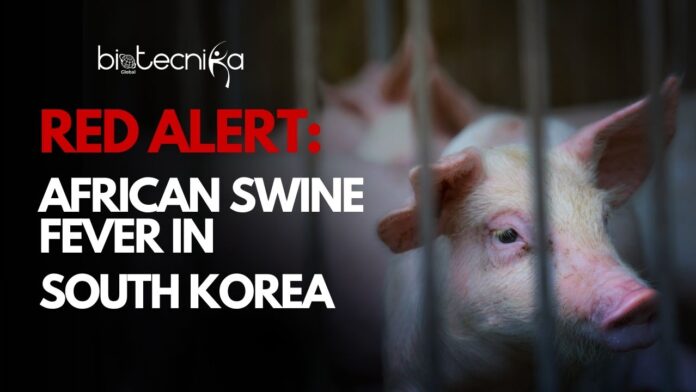African Swine Fever Outbreak in South Korea
South Korea declared a nationwide “red alert” on 24 November 2025 after confirming its sixth African Swine Fever (ASF) case in 2025. It was announced this time at a pig farm in Dangjin, South Chungcheong Province. It is the largest pig-breeding region of the country.
According to officials from the Central Disaster Management Headquarters (CDMH), the farm was raising 463 pigs; in response, authorities culled 1,423 pigs across the affected farm and three nearby facilities run by the same operator.
A 48-hour standstill order was simultaneously issued for all pig farms, slaughterhouses, and related livestock facilities nationwide to curb further spread.
Red Alert in the Heart of Swine Country
Until now, all five of this year’s ASF cases have been concentrated in Gyeonggi Province, in the north of the country. But this outbreak in South Chungcheong dramatically raises the stakes. According to the Agriculture Ministry, the region has the highest swine-farming capacity in South Korea, heightening the risk of broader transmission.
Officials have launched targeted disinfection operations in Dangjin and nearby areas, while emergency inspections are underway on roughly 140 linked farms to check for further infection. The CDMH has committed to mobilizing “all available resources” to contain the disease.
The Price of Prevention: Economic Risks and Market Strain
ASF does not affect humans, but the disease is devastating for pigs and the pork industry. With no widely used vaccine or cure, culling remains the only effective way to stop the virus from spreading. As a result, outbreaks can significantly disrupt the domestic pork market.
Still, not every outbreak results in major price shocks. For example, during South Korea’s fifth ASF incident at a small Gyeonggi farm, the impact on pork prices was expected to be limited. At the time, traders said the affected herd was relatively small compared to the country’s total pig population (estimated at over 11 million), so the disruption was manageable.
However, the location of the latest outbreak introduces fresh concern. Because South Chungcheong accounts for a large share of Korea’s pig production, a severe disease outbreak there could ripple through the supply chain, potentially affecting transport, slaughterhouses, and regional pork availability.
Tough Measures, but Not New
South Korea’s swift response, standstill orders, mass culls, and aggressive disinfection reflect a tested playbook. The country has faced ASF before and has robust quarantine measures in place. But in recent years, veterinary experts and policymakers have argued for strengthening early detection systems and digitizing livestock biosecurity.
ASF’s high fatality rate in pigs, combined with the absence of effective vaccines, makes early action critical. If containment fails, the economic consequences could mount quickly, especially in central pig-farming provinces.
Looking Ahead: What to Watch for the ASF Outbreak?
Several key developments will shape how serious this outbreak could become:
- Testing and tracing results — The next few days will be decisive in determining whether secondary infections emerge among the 140 linked farms under watch.
- Extension of movement controls — If the 48-hour standstill is prolonged or localized permanently, logistical pressures on farm operations and pork distribution could rise sharply.
- Compensation and support — How quickly and generously the government compensates farmers for culled pigs and supports disinfection will influence industry cooperation, herd recovery, and long-term farmer morale.
- Market reaction — Retail pork prices, especially for high-demand cuts, may rise if the outbreak disrupts supply. Alternatively, buyers may substitute other proteins, such as chicken or beef.
- Policy reforms — This outbreak could push South Korea to further modernize its biosecurity protocols, including digital tracking, tighter quarantine zones, and potentially more research into ASF vaccines or better surveillance tools.
South Korea’s decision to raise its alert level reflects the severity of this sixth African Swine Fever incident, not just the number of pigs culled, but also where the outbreak occurred. Dangjin’s status as a pig-farming powerhouse means that the threat is more than a localized farm problem; it could strain the country’s entire pork supply chain.
Still, the government’s fast response, backed by strong quarantine infrastructure, gives reason for cautious optimism. If the virus can be contained quickly, the direct market impact may remain limited. But if it spreads, the fallout could extend to prices, farm incomes, and food security. For now, all eyes are on the next round of test results, policy moves, and market signals.





